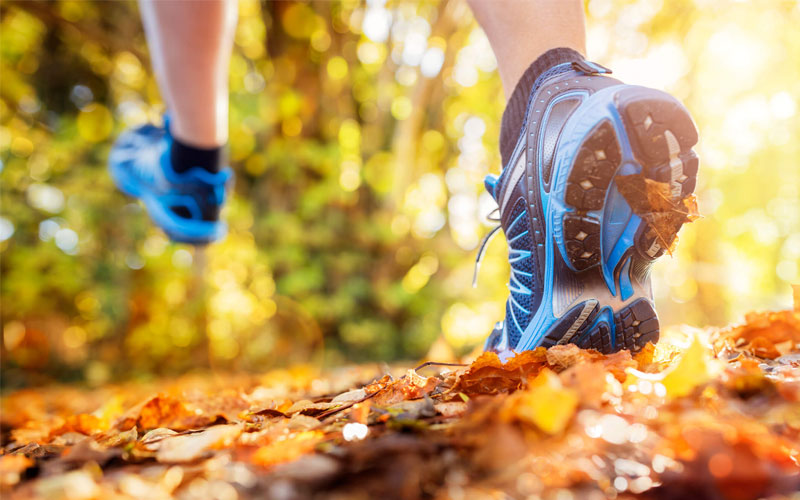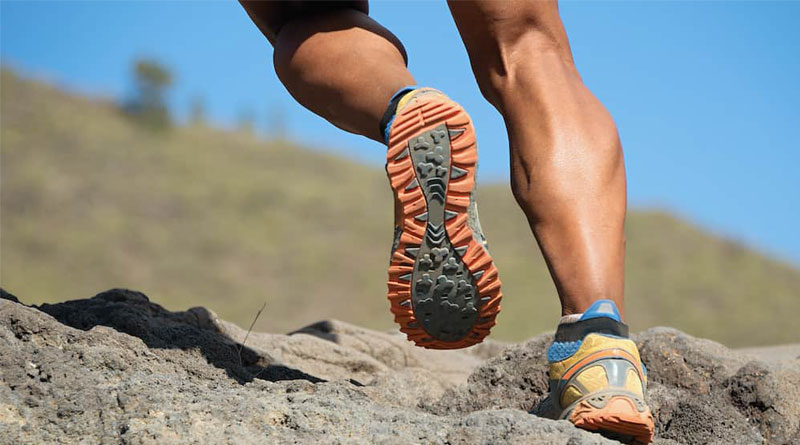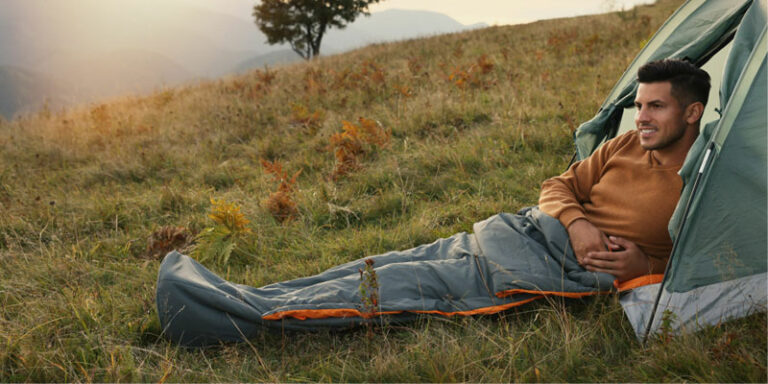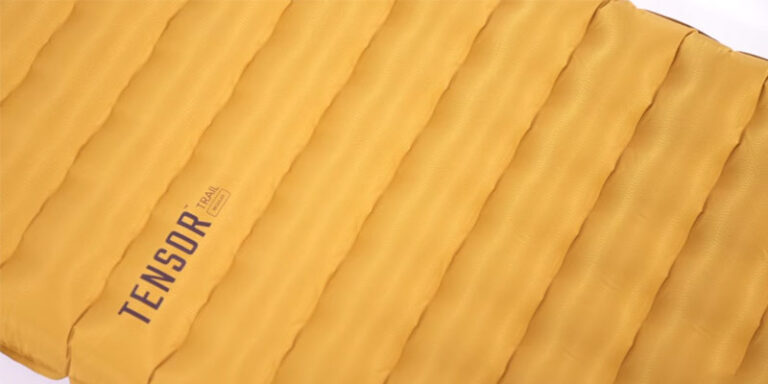Finding the right trail running shoes for wide feet can be tricky. Many brands make narrow shoes that feel tight and uncomfortable. A good pair should give your toes space, offer solid grip, and provide good arch support. It should also protect your feet from rough trails and keep them stable. The best wide-fit trail running shoes prevent blisters and let you run without pain. They also have strong cushioning to absorb impact. In this guide, we’ll explore the top options for wide feet. Whether you need extra comfort, durability, or a waterproof design, we’ve got you covered. Let’s find the perfect trail running shoes for your adventures!
1. Altra Lone Peak 9
Cushioning: Moderate
Drop: 0mm
Weight: 1 lb. 6.4 oz.
Upper: Ripstop mesh
The Altra Lone Peak 9 is a reliable and comfortable trail-running shoe. It is lightweight, making long hikes and runs easier. The updated MaxTrac™ outsoles provide a strong grip on different terrains. They also improve durability, helping the shoes last longer. The Altra EGO™ midsole foam gives a good balance of comfort and ground feel. This allows for a natural connection to the trail. The upper is made of ripstop mesh with durable no-sew overlays. This design helps the shoes withstand high-mileage use. The wide Altra Original FootShape™ Fit gives plenty of room for your toes. This makes movement easy and reduces discomfort.
The Lone Peak 9 also includes thoughtful features for tough trails. The Stoneguard™ inserts protect your feet from sharp rocks and debris. They add flexibility while keeping the shoe stable. The hook-and-loop GaiterTrap™ tabs let you attach gaiters to keep out dirt. The shoe has a zero-to-low drop design, which promotes a natural stride. It feels almost like walking barefoot, but with more support. The breathable material keeps your feet cool and dry. It works well for trail running, hiking, and even casual wear. If you need a wider toe box, these shoes are a great choice. They are lightweight yet tough, making them perfect for long adventures.
What I like: A very comfortable shoe that lets your foot rest naturally and feels even lighter than the previous version.
What I don’t: Feels slow and slipper-like, too spacious for some
See the Altra Lone Peak 9 See the Women’s Lone Peak 9
2. HOKA Speedgoat 6
Cushioning: Maximum
Drop: 5mm
Weight: 1 lb. 3.6 oz.
Upper: Woven textile
The HOKA Speedgoat 6 is a solid trail-running shoe built for comfort and grip. It has thick cushioning, making long runs easier on the feet. The lightweight woven upper is breathable and keeps the shoe from feeling too heavy. The dynamic vamp and gusseted tongue add a snug fit without feeling too tight. An internal support chassis hugs the foot, keeping it stable on rocky paths. The toe bumper offers protection from sharp rocks and roots. The midsole is soft yet responsive, giving a smooth ride with less weight. The Vibram® Megagrip outsole provides excellent traction on tough terrain. The 5 mm lugs, designed like a goat’s hoof, help grip slippery and uneven trails.
These shoes are great for long runs on technical trails. They feel stable and protective, making them ideal for 2+ hour runs. They are not the fastest shoes, but they shine in durability and comfort. There are no issues with heel slipping or the tongue being too short. Quality is solid, with no noticeable wear after regular use. However, the sizing is not perfect. They run very narrow, so it’s best to size up or get the wide version. At around 9-minute miles on rough trails, they hold up well. Overall, they are a reliable and comfortable choice, but the sizing could be better.
What I like: Exceptional comfort and grip in a lightweight design.
What I don’t: The thick midsole reduces ground feel on technical trails; previous versions felt more responsive.
See the HOKA Speedgoat 6 See the Women’s Speedgoat 6
3. La Sportiva Bushido III
Cushioning: Moderate
Drop: 6mm
Weight: 1 lb. 5 oz.
Upper: Air mesh
The La Sportiva Bushido III is a top choice for technical trails. It offers a secure fit and durable build for tough terrain. The air-mesh upper keeps your feet cool, while thermal-adhesive microfiber and ripstop overlays add strength. Mono-burr mesh inlays improve breathability. The slip-on design hugs your foot like a sock without creating pressure points. The compression-molded MEMlex midsole provides great cushioning and support. A 1.5 mm dual-density EVA forefoot rock guard protects against sharp rocks. The updated outsole has improved traction, making it even more reliable. The FriXion® Red bi-compound rubber ensures maximum grip on all surfaces. Lug patterns wrap around the midsole for added stability on uneven trails.
These shoes are lightweight yet tough, perfect for running on rocky and slippery paths. La Sportiva suggests sizing up half a size for a more relaxed fit. The shoes feel snug but not restrictive, making them great for long runs. One downside is the laces, which may be too short for those with big feet. Despite this, the performance outweighs the small issue. They handle steep climbs and descents with confidence. Many runners, including myself, swear by the Bushido line. They are my go-to trail shoes, and I hope they never get discontinued. I’ll be getting another pair soon!
What I like: An excellent technical shoe with outstanding grip.
What I don’t: Excessive grip but lacks enough cushioning for long-distance runs and daily training.
See the La Sportiva Bushido III See the Women’s Bushido III
4. Salomon Speedcross 6
Cushioning: Moderate
Drop: 10mm
Weight: 1 lb. 5 oz.
Upper: Synthetic/textile
The Salomon Speedcross 6 keeps the same comfort and grip that made the previous versions so popular. This updated model is lighter, with redesigned uppers and better mud evacuation. The welded upper construction hugs the foot for a secure fit. SensiFit™ technology ensures a precise hold, keeping your foot stable on rough terrain. The Quicklace™ system allows easy one-pull tightening for quick on-and-off convenience. The midsole uses EnergyCell™+ foam, providing high energy return and great cushioning. The outsole has deep, sharp Mud Contagrip® lugs, offering excellent traction on wet and loose terrain. The new design also includes recycled materials, making it more eco-friendly.
While the Speedcross 6 is comfortable and requires no break-in time, durability is a concern. Compared to the Speedcross 4 and 5, the outsole wears out faster, especially the cleats. The rock plate also seems less protective, making sharp rocks more noticeable underfoot. The lighter weight is a plus, but it raises questions about sole quality. Despite these drawbacks, the shoe still performs well on muddy and uneven surfaces. It grips confidently and provides solid support for trail runners. If durability isn’t a top priority, it remains a good choice for those seeking comfort and traction. However, long-time Speedcross fans may notice a decline in longevity.
What I like: Outstanding grip on soft terrain.
What I don’t: Not ideal for easy trails or high-altitude runs.
See the Salomon Speedcross 6 See the Women’s Speedcross 6
5. HOKA Challenger 7
Cushioning: Maximum
Drop: 4mm
Weight: 1 lb. 1.8 oz.
Upper: Engineered mesh
The HOKA Challenger 7 is a lightweight trail-running shoe with great comfort and versatility. It has a higher stack height than before, giving a softer and more cushioned feel. The new mesh upper is simple yet breathable, keeping feet cool during long runs. A softer foam midsole adds to the overall comfort, reducing impact on hard surfaces. The outsole design is reimagined for all-terrain grip, making it reliable on different surfaces. Inspired by gravel tires, the 4 mm lugs provide strong traction. The lugs are tightly spaced in the center for smooth movement and larger on the edges for extra grip. Extended heel pulls make slipping them on quick and easy. The laces are made from recycled polyester, which adds an eco-friendly touch.
These shoes perform well on both roads and trails but wear out faster than expected. After six months of tough use, they were completely worn down. Other trail shoes have lasted longer under similar conditions. However, their comfort and versatility make them a favorite for many users. They work well for running, hiking, and even everyday wear. Even after they wear out on the trails, they remain comfortable for work or casual use. For those looking for a plush and lightweight trail shoe, the Challenger 7 is a great choice. Just don’t expect them to last forever.
What I like: Gravel tire-inspired lugs offer a good grip on both roads and trails.
What I don’t: Wears out faster than other trail runners, especially with heavy use.
See the HOKA Challenger 7 See the Women’s Challenger 7
Wide-Fit Trail Running Shoes: Summary
| SHOES | CUSHIONING | DROP | WEIGHT | UPPER |
|---|---|---|---|---|
| Altra Lone Peak 9 | Moderate | 0mm | 1 lb. 6.4 oz. | Ripstop mesh |
| HOKA Speedgoat 6 | Maximum | 5mm | 1 lb. 3.6 oz. | Woven textile |
| La Sportiva Bushido III | Moderate | 6mm | 1 lb. 5 oz. | Air mesh |
| Salomon Speedcross 6 | Moderate | 10mm | 1 lb. 5 oz. | Synthetic/textile |
| HOKA Challenger 7 | Maximum | 4mm | 1 lb. 1.8 oz. | Engineered mesh |
How to Choose Trail Runners for Wide Feet?

Trail running is an exciting way to explore nature while staying fit. But for people with wide feet, finding the right trail running shoes can be difficult. A poor fit can cause discomfort, blisters, and even injuries. Choosing the right pair ensures comfort, stability, and protection on rough trails.
Understanding Your Foot Shape
Before buying shoes, it is important to understand your foot shape. Wide feet need extra space in the toe box and midfoot area. Some people have naturally wider feet, while others develop them over time. Foot width can also change due to factors like age, swelling, or injuries. Knowing your exact foot size and width helps in making the best choice.
Why Regular Running Shoes May Not Work
Many standard running shoes are designed for narrow or medium-width feet. This can lead to tightness and discomfort for those with wide feet. A tight shoe can cause blisters, black toenails, and pain. In contrast, a properly fitting shoe provides enough room for natural foot movement. This improves comfort and reduces the risk of injuries.
Choosing the Right Fit
A well-fitting trail running shoe should feel snug but not tight. There should be enough space in the toe box to wiggle your toes. The midfoot and heel should feel secure without causing pressure points. Trying shoes on in the evening is a good idea since feet tend to swell throughout the day. Wearing your usual running socks while testing shoes also helps in getting an accurate fit.
Look for Wide-Specific Models
Many brands offer wide versions of their popular trail running shoes. These models provide extra room in key areas without compromising performance. Some well-known brands like New Balance, Altra, and Brooks have excellent options for wide feet. Checking for shoes labeled “wide” or “extra-wide” ensures a better fit.
Consider the Toe Box Shape
A wide toe box allows toes to spread naturally. This helps with balance and reduces pressure points. Brands like Altra and Topo Athletic design shoes with foot-shaped toe boxes. These are ideal for runners who need extra room in the front. A narrow or pointed toe box can cause discomfort and restrict movement.
Cushioning and Support
Trail surfaces can be rough, so good cushioning is important. Too much cushioning can make a shoe feel unstable, while too little can cause discomfort. A balanced level of cushioning absorbs impact and protects feet from sharp rocks and roots. Some shoes offer extra padding around the heel and forefoot for added comfort.
Traction and Grip
Trail running shoes need a strong grip to handle different terrains. Look for outsoles with deep lugs for better traction on muddy or rocky surfaces. A good outsole provides stability and prevents slipping. Brands like Salomon and La Sportiva have excellent grip technology for rough trails.
Breathability and Waterproofing
Breathable materials keep feet dry and comfortable during long runs. Shoes with mesh uppers allow air to flow, preventing sweat buildup. In wet conditions, waterproof shoes with GORE-TEX lining help keep feet dry. However, waterproof shoes can feel less breathable in hot weather. Choosing between breathability and waterproofing depends on the climate and trail conditions.
Heel Drop and Stability
Heel drop refers to the difference in height between the heel and forefoot. A lower heel drop encourages a natural stride, while a higher drop provides more heel support. Runners with wide feet should choose a shoe that feels stable and comfortable for their running style. Some brands offer zero-drop shoes, which promote a more natural foot position.
Trying Shoes Before Buying
Trying on shoes before purchasing is essential. Walking or jogging in them helps assess comfort and fit. If buying online, checking return policies ensures an easy exchange if the fit is not right. Reading reviews from other runners with wide feet can also provide useful insights.
Breaking in Your Shoes
New shoes may need a break-in period before long runs. Wearing them for short walks or runs helps the feet adjust. This reduces the risk of blisters and discomfort. If a shoe feels uncomfortable after several wears, it may not be the right fit.
Conclusion
Choosing the right trail running shoes improves comfort and performance. Understanding foot shape, selecting wide-specific models, and considering factors like cushioning, traction, and breathability are key. Taking time to find the perfect fit makes trail running more enjoyable and reduces the risk of injuries. With the right shoes, runners with wide feet can hit the trails with confidence.








